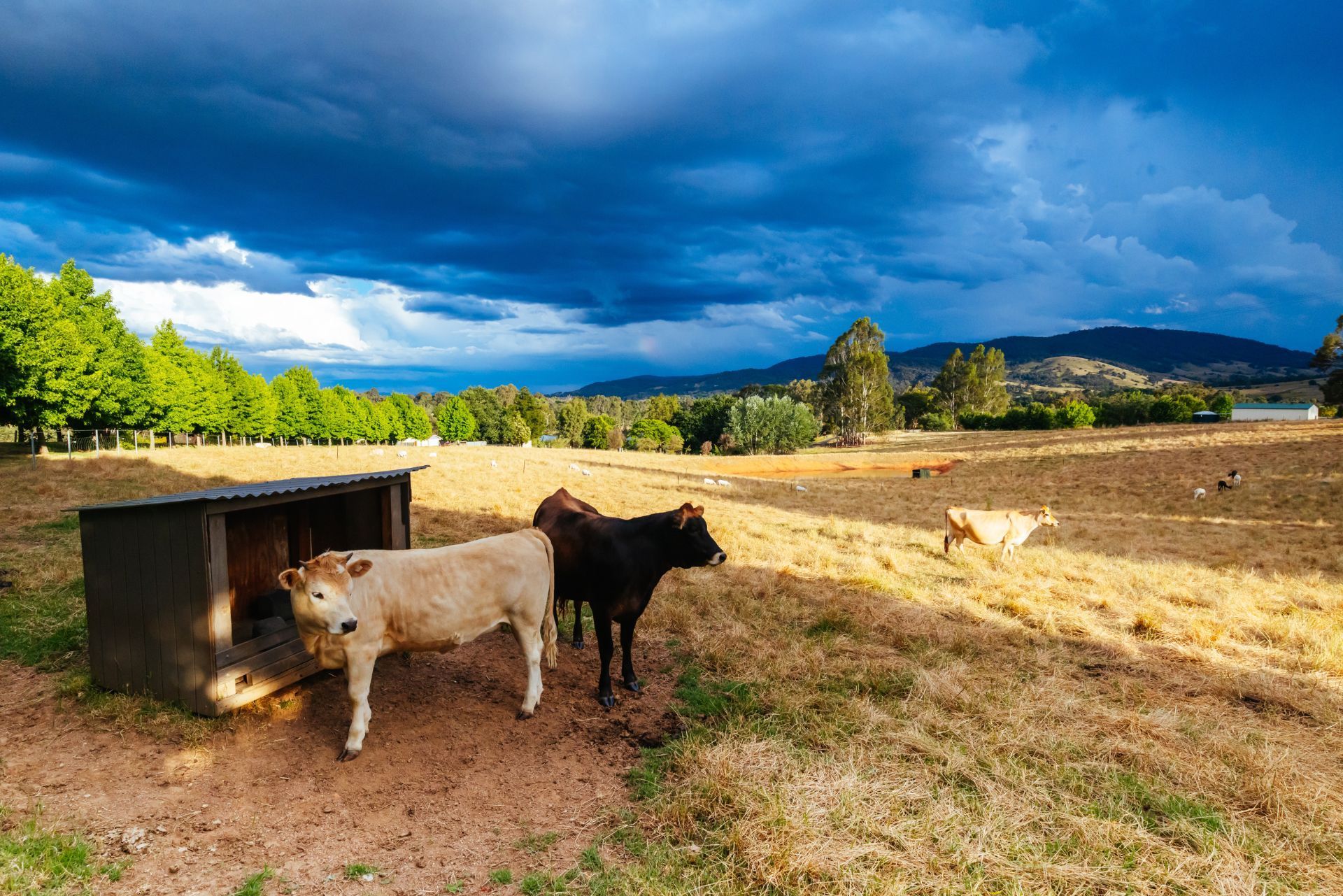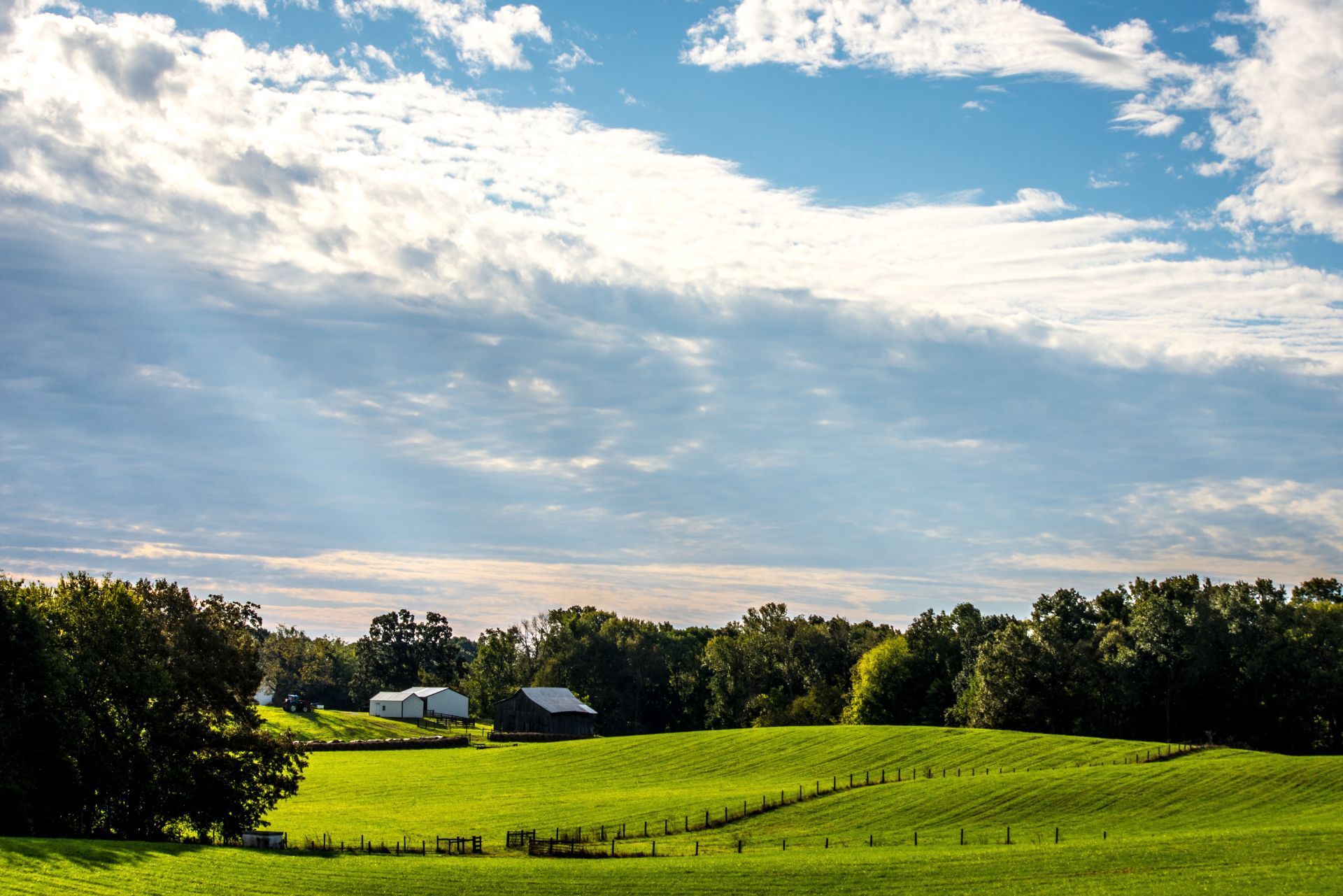
Top 3 Recommended Policies

Texas is known for its vast landscapes, rich agricultural history, and thriving ranching community. With such a significant portion of the state's economy tied to farming and ranching, it's essential for landowners and operators to protect their investments. This is where Texas farm and ranch insurance comes into play. This article will provide a comprehensive overview of what this type of insurance entails, its importance, and how to choose the right coverage for your needs.
Understanding Texas Farm and Ranch Insurance
Farm and ranch insurance is a specialized form of insurance designed to protect the unique assets and liabilities associated with agricultural operations. Unlike standard homeowners' insurance, this coverage caters specifically to the needs of farmers and ranchers, addressing the risks inherent in these professions. The agricultural landscape in Texas is vast and diverse, ranging from sprawling cattle ranches to small organic farms, each with its own set of challenges and insurance requirements. As such, having a tailored insurance plan is not just a precaution; it is an essential component of sustainable agricultural practice.
What Does Farm and Ranch Insurance Cover?
Farm and ranch insurance policies can vary significantly depending on the provider and the specific needs of the insured. Generally, these policies cover:
- Property Coverage: This includes protection for buildings, equipment, and livestock. Whether it's a barn, tractor, or herd of cattle, having the right property coverage ensures that losses can be mitigated. Additionally, coverage can extend to specialized structures like silos and greenhouses, which are critical for certain farming operations.
- Liability Coverage: Farmers and ranchers face unique liability risks, such as accidents involving visitors or damage caused by livestock. Liability coverage protects against claims that may arise from these incidents. This can include coverage for injuries sustained on the property, as well as damage to neighboring properties caused by runaway livestock or equipment malfunctions.
- Crop Insurance: For those who cultivate crops, crop insurance is vital. It protects against losses due to natural disasters, pests, or diseases that can devastate yields. Furthermore, some policies offer coverage for revenue loss, ensuring that farmers can maintain financial stability even when crop production is compromised.
Why Is Farm and Ranch Insurance Important?
The importance of farm and ranch insurance cannot be overstated. With the unpredictable nature of agriculture, having comprehensive coverage provides peace of mind. Here are a few reasons why this insurance is crucial:
- Financial Protection: In the event of a disaster, whether it be a fire, flood, or disease outbreak, insurance can help cover the costs of recovery and replacement. This financial safety net allows farmers to focus on rebuilding their operations rather than being overwhelmed by unexpected expenses.
- Compliance and Regulations: Many lenders require insurance as a condition for financing. Additionally, certain regulations may mandate specific coverage types. Understanding these requirements is essential for farmers looking to secure loans or grants, as non-compliance can lead to significant financial setbacks.
- Asset Preservation: Farms and ranches often represent significant investments. Insurance helps ensure that these assets are protected from unforeseen events. This preservation extends beyond physical assets; it also encompasses the livelihoods of families and communities that depend on agricultural success.
Moreover, the dynamic nature of the agricultural sector means that farmers and ranchers must stay informed about evolving risks and insurance options. For instance, climate change has introduced new challenges, such as increased frequency of droughts and floods, which can impact crop yields and livestock health. As a result, many insurance providers are now offering innovative policies that include coverage for climate-related events, thus allowing farmers to adapt to these changes more effectively. Staying proactive about insurance not only safeguards assets but also promotes resilience within the agricultural community.

Types of Coverage Available
Farm and ranch insurance policies can be tailored to meet the specific needs of the operation. Understanding the types of coverage available can help landowners make informed decisions about their insurance needs.
Property Insurance
Property insurance is a cornerstone of any farm and ranch insurance policy. It typically covers:
- Buildings: This includes barns, silos, and other structures used in the farming or ranching operation.
- Equipment: Tractors, plows, and other machinery are essential for operations and can be costly to replace.
- Livestock: Coverage for livestock is crucial, as these animals are often the lifeblood of a ranching operation.
In addition to the basic coverage, many policies offer options for additional structures such as greenhouses or storage facilities, which can be vital for certain types of operations. Furthermore, some insurers provide coverage for specialized equipment like irrigation systems or feed storage units, recognizing their importance in maintaining productivity. This comprehensive approach ensures that farmers and ranchers can protect their investments against unforeseen events such as fire, theft, or natural disasters, allowing them to focus on their operations without the constant worry of potential losses.
Liability Insurance
Liability insurance protects against claims resulting from injuries or damages that occur on the property. This can include:
- Visitor Injuries: If someone is injured while visiting the farm or ranch, liability insurance can help cover medical expenses and legal fees.
- Property Damage: If livestock or equipment causes damage to a neighbor's property, liability coverage can help settle claims.
Moreover, liability insurance can extend to cover incidents involving employees, providing protection against workplace injuries that may occur during the course of their duties. This is particularly important in agricultural settings where the risk of accidents can be higher due to the nature of the work involved. Additionally, some policies may offer coverage for product liability, which is essential for those who sell goods directly to consumers, ensuring that any claims related to product defects or contamination are adequately managed.
Crop Insurance
Crop insurance is particularly important for those who grow crops for sale. It can cover:
- Loss of Yield: If a natural disaster or pest infestation occurs, crop insurance can compensate for lost income due to reduced yields.
- Replanting Costs: In the event of a crop failure, insurance can help cover the costs associated with replanting.
Additionally, many crop insurance policies offer options for multi-peril coverage, which protects against a wide range of risks including drought, flooding, and disease outbreaks. This flexibility allows farmers to select coverage that aligns with their specific crop types and regional risks. Furthermore, some insurers provide educational resources and risk management tools to help farmers make better decisions regarding their planting and harvesting strategies, ultimately leading to more sustainable practices and improved financial outcomes.
Factors to Consider When Choosing Insurance
Selecting the right farm and ranch insurance policy involves careful consideration of various factors. Understanding these elements can help ensure that the chosen policy adequately meets the needs of the operation.
Assessing Your Needs
Before choosing a policy, it is essential to assess the specific needs of the farm or ranch. Consider the following:
- Type of Operation: Different types of farms and ranches have unique risks. For example, a dairy farm may have different coverage needs than a cattle ranch.
- Size of the Operation: Larger operations may require more extensive coverage, while smaller farms may be adequately protected with basic policies.
Additionally, consider the geographical location of your operation, as this can significantly influence the types of risks you face. For instance, farms in areas prone to flooding or wildfires may need specialized coverage to protect against these natural disasters. It's also worth evaluating the equipment and machinery used in your operations, as these assets can be costly to replace and may require specific endorsements in your policy.
Understanding Policy Limits
Each insurance policy will have limits on coverage. Understanding these limits is crucial, as they determine the maximum amount the insurer will pay in the event of a claim. Key points to consider include:
- Replacement Cost vs. Actual Cash Value: Replacement cost policies cover the cost of replacing items at current market value, while actual cash value policies take depreciation into account.
- Deductibles: Higher deductibles can lower premium costs but may result in higher out-of-pocket expenses during a claim.
Moreover, it is important to review any exclusions or limitations within the policy. Some policies may not cover certain types of losses, such as those resulting from negligence or specific natural disasters. Understanding these nuances can help prevent unpleasant surprises when filing a claim and ensure that you have the necessary coverage for all potential risks.
Comparing Quotes
Once the needs have been assessed, it's wise to compare quotes from multiple insurance providers. This process involves:
- Evaluating Coverage Options: Look for policies that offer comprehensive coverage tailored to the specific needs of the operation.
- Checking Financial Stability: Research the financial stability of the insurance provider to ensure they can meet their obligations in the event of a claim.
In addition to evaluating coverage and financial stability, consider the customer service reputation of the insurance companies you are reviewing. A provider that is responsive and helpful during the claims process can make a significant difference in your experience, especially during stressful times. Reading customer reviews and seeking recommendations from fellow farmers or ranchers can provide valuable insights into which companies are known for their reliability and support.
Common Exclusions in Farm and Ranch Insurance
While farm and ranch insurance provides essential coverage, it is also important to be aware of common exclusions that may apply. Understanding these exclusions can help landowners avoid unexpected gaps in coverage.
Natural Disasters
Many policies may exclude certain natural disasters, such as:
- Floods: Standard farm insurance policies often do not cover flood damage. Separate flood insurance may be necessary.
- Earthquakes: Similar to floods, earthquake coverage is typically not included and must be purchased separately.
In addition to floods and earthquakes, other natural disasters like hurricanes and tornadoes may also be excluded or have limited coverage. These events can lead to significant property damage, and landowners in high-risk areas should consider additional policies or endorsements to ensure comprehensive protection. It’s crucial to assess the specific risks associated with the geographical location of the farm or ranch, as this can greatly influence the type of coverage needed.
Negligence
Insurance policies may not cover damages resulting from negligence. This can include:
- Improper Maintenance: Failing to maintain equipment or buildings may lead to exclusions in coverage for related damages.
- Unsafe Practices: Engaging in unsafe farming practices can also lead to denied claims.
Furthermore, negligence can extend to the handling of livestock and crops. For instance, if a farmer neglects to provide adequate shelter or care for their animals, resulting in injury or loss, the insurance policy may not cover the associated claims. Similarly, improper storage of chemicals or fertilizers that leads to contamination can also be grounds for denial. Therefore, it is vital for landowners to adhere to best practices and maintain thorough documentation of their maintenance and safety protocols.
Intentional Acts
Intentional acts, such as vandalism or arson committed by the insured, are typically excluded from coverage. This reinforces the importance of maintaining security and safety on the property.
Moreover, intentional acts can also encompass fraudulent claims. If a landowner is found to have intentionally misrepresented information or staged an incident to collect insurance money, it can lead to severe penalties, including the cancellation of the policy and potential legal action. To mitigate these risks, farmers and ranchers should invest in security measures such as surveillance systems, fencing, and community vigilance to protect their assets and ensure that they are operating within the bounds of their insurance agreements.
How to File a Claim
In the unfortunate event of a loss, knowing how to file a claim is essential. The process can vary by provider, but generally follows these steps:
Document the Incident
Before filing a claim, it is crucial to document the incident thoroughly. This includes:
- Taking Photos: Capture images of any damage or loss to provide evidence to the insurance company.
- Gathering Receipts: Collect receipts for any repairs or replacements that may be necessary.
Contact Your Insurance Provider
Once documentation is complete, the next step is to contact the insurance provider. This typically involves:
- Notifying the Insurer: Inform the insurance company of the incident as soon as possible.
- Filling Out Claim Forms: Complete any required claim forms and provide the necessary documentation.
Follow Up
After filing the claim, it is important to follow up with the insurance company. This may include:
- Checking Claim Status: Regularly check the status of the claim to ensure it is being processed.
- Providing Additional Information: Be prepared to provide any additional information or documentation as requested by the insurer.
Choosing the Right Insurance Provider
Choosing the right insurance provider is just as important as selecting the right policy. Here are some tips to help in making this decision:
Researching Providers
Before committing to an insurance provider, conduct thorough research. This can include:
- Reading Reviews: Look for reviews and testimonials from other farmers and ranchers to gauge customer satisfaction.
- Checking Ratings: Review the financial ratings of the insurance company to ensure they are stable and reliable.
Consulting with an Agent
Consulting with an insurance agent who specializes in farm and ranch insurance can provide valuable insights. They can help:
- Identify Coverage Needs: An experienced agent can assist in identifying specific coverage needs based on the type of operation.
- Navigate Policy Options: Agents can help navigate the various policy options available and find the best fit.
Understanding Customer Service
Customer service is a crucial factor when choosing an insurance provider. Consider the following:
- Accessibility: Ensure that the provider has accessible customer service representatives who can assist with questions and claims.
- Response Time:
Research the average response time for claims and inquiries to ensure timely support.

Conclusion
Texas farm and ranch insurance is an essential safeguard for those involved in agricultural operations. With the right coverage, farmers and ranchers can protect their investments, comply with regulations, and ensure financial stability in the face of unexpected events. By understanding the types of coverage available, assessing individual needs, and choosing the right provider, landowners can secure the peace of mind that comes with knowing their livelihoods are protected.
As the agricultural landscape continues to evolve, staying informed about insurance options and best practices is vital. Whether it's adapting to new risks or exploring innovative coverage solutions, being proactive in managing risk can lead to a more resilient and successful farming or ranching operation.
Contact Us

